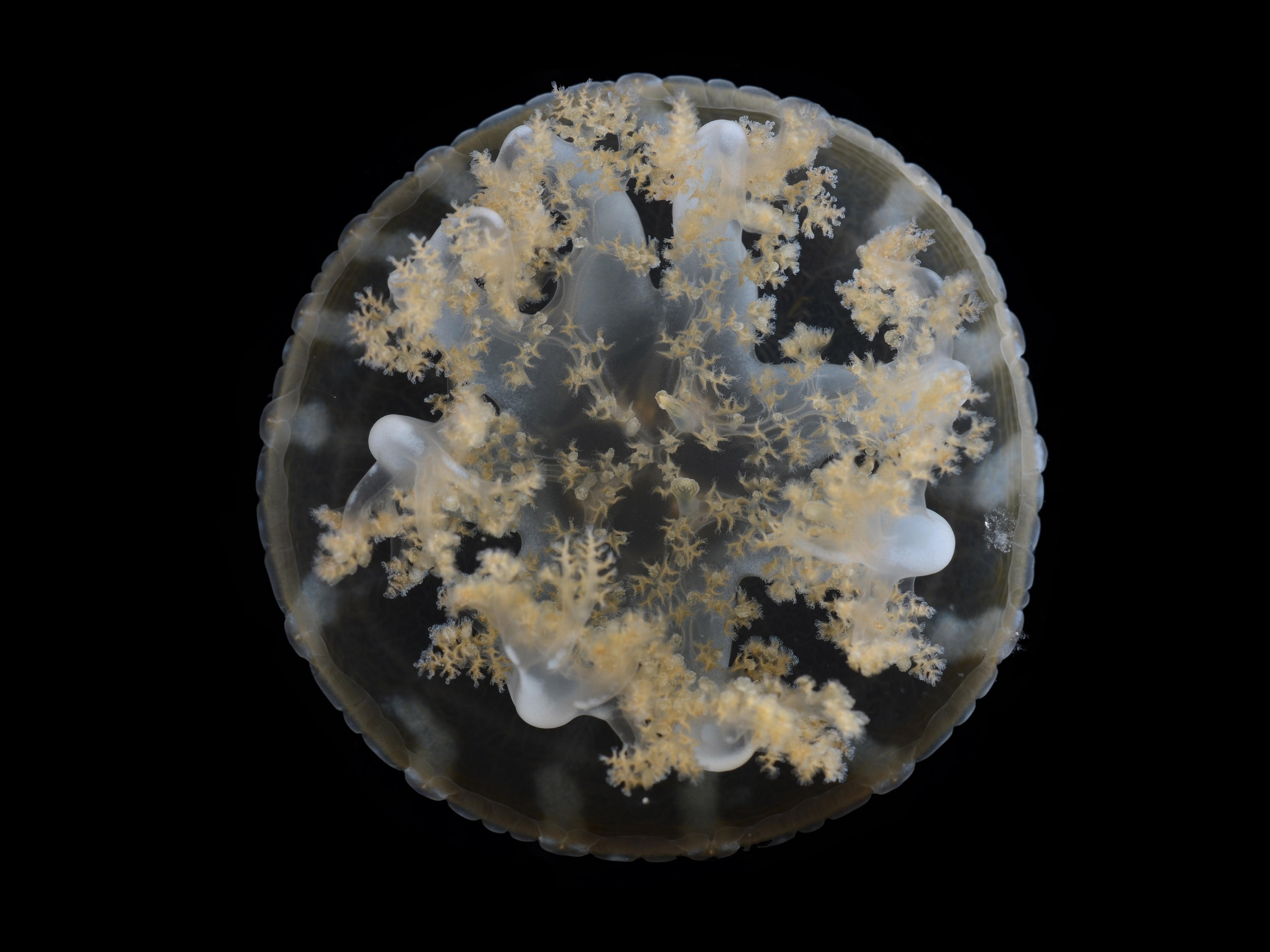How jellyfish create 'stinging water'
Embargoed until:
Publicly released:
2020-02-14 03:00
Until now, it's been unknown why snorkelers in mangrove forests around Florida, the Caribbean, and Micronesia have felt jellyfish stings without coming into direct contact with any jellyfish. A research team reviewed the scientific literature on the Cassiopea jellyfish dating back to the early 1900s to search for clues about stinging water. They learned that mucus released by this jellyfish contains tiny cell masses, called cassiosomes, that are lined with thousands of jellyfish stinging cells. The authors show that jellyfish release this mucus into the water like tiny grenades, thus creating stinging water.
Journal/conference: Communications Biology
Link to research (DOI): 10.1038/s42003-020-0777-8
Organisation/s: US Naval Research Laboratory, USA
Funder: The research was initiated by CLA with funds from the Animal Science and Research Committee (National Aquarium). Additionally, C.L.A., L.D.F., J.N.S., and M.M. acknowledge postdoctoral fellowships from the National Research Council’s Research Associateships Program. A.M.L.K. acknowledges funding from a Lerner-Gray Memorial Grant for Research in Marine Science from the American Museum of Natural History and a Graduate Studies Summer Scholarship from the University of Kansas, as well as a Smithsonian Research Fellowship at the NMNH. This research was developed with funding from the Defense Advanced Research Projects Agency (DARPA) (J.T.R. and G.J.V.) and the National Science Foundation Enabling Discovery through Genomics Tools program (J.T.R.).
Media Release
From: Springer Nature
From: Communications Biology
Novel structures formed of stinging cells found in the mucus of the upside-down jellyfish Cassiopea xamachana are described in a paper published in Communications Biology. These structures – named cassiosomes – are capable of killing prey and likely cause the sensation known as ‘stinging water’, experienced by snorkelers in mangrove forest waters.
Mangrove forests are home to Cassiopea jellyfish, which lie upside-down on the bottom of shallow waters with frilly oral-ams facing upward. Snorkelers in these waters around Florida, the Caribbean and Micronesia have long reported the feeling of jellyfish stings without coming into direct contact with any jellyfish. Many possible explanations for this stinging water have been suggested, but the exact cause is unknown.
Gary Vora and colleagues reviewed the scientific literature on Cassiopea dating back to the early 1900s to search for clues about stinging water. They learned that mucus released by Cassiopea contains tiny cell masses, called cassiosomes. The authors used microscopy and found that the outer layer of the cassiosome is lined with thousands of jellyfish stinging cells called nematocysts. Nematocysts are toxin-filled capsules normally found in specialized cells in jellyfish tentacles. The authors show that jellyfish release the cassiosome-filled mucus into the water like tiny grenades, thus creating stinging water. The authors also found these cassiosomes in four additional related species of jellyfish.
Attachments:
Note: Not all attachments are visible to the general public


